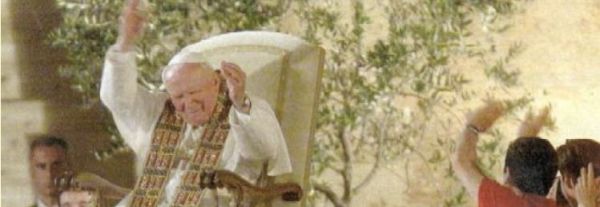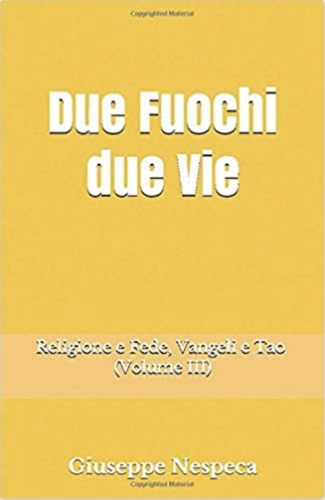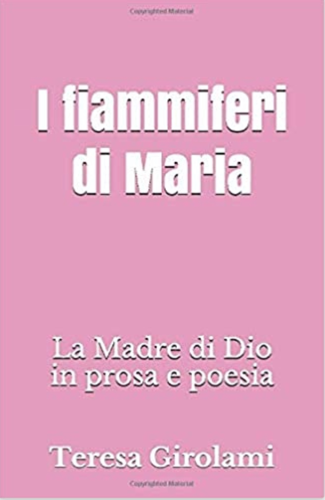Dear Brothers and Sisters,
1. On her pilgrimage to full communion of love with God, the Church appears as "a people made one with the unity of the Father, the Son and the Holy Spirit". St Cyprian's marvellous definition (De Orat. Dom. 23; cf. Lumen gentium, n. 4) takes us into the mystery of the Church, which has been made a community of salvation by the presence of God the Trinity. Like the ancient People of God, she is guided on her new Exodus by the pillar of cloud by day and the pillar of fire by night, symbols of God's constant presence. In this perspective, let us contemplate the glory of the Trinity which makes the Church one, holy, catholic and apostolic.
2. First of all the Chuch is one. The baptized, in fact, are mysteriously united to Christ and form his Mystical Body by the power of the Holy Spirit. As the Second Vatican Council says: "The highest exemplar and source of this mystery is the unity, in the Trinity of Persons, of one God, the Father and the Son in the Holy Spirit" (Unitatis redintegratio, n. 2). Although in the past this unity has suffered the painful trial of many divisions, the Church's inexhaustible Trinitarian source spurs her to live ever more deeply that koinonia, or communion, which was resplendent in the first community of Jerusalem (Acts 2: 42; 4: 32).
Ecumenical dialogue draws light from this perspective, since all Christians are aware of the Trinitarian foundations of communion: we stress "the God-givenness of the koinonia and its Trinitarian character. The point of departure is the baptismal initiation into the Trinitarian koinonia by faith, through Christ in his Spirit. The Spirit-given means to sustain this koinonia are the Word, ministry, sacraments, charisms" (Perspectives on Koinonia, Report from the third quinquennium, 1985-89, of the Catholic-Pentecostal dialogue, n. 31). In this regard the Council reminds all the faithful that "the closer their union with the Father, the Word and the Spirit, the more deeply and easily will they be able to grow in mutual brotherly love" (Unitatis redintegratio, n. 7).
3. The Church is also holy. In biblical language, even before being an expression of the moral and existential holiness of the faithful, the concept of "holy" refers to the consecration wrought by God through the election and the grace offered to his people. It is the divine presence, then, which "sanctifies" the community of believers "in the truth" (Jn 17: 17, 19).
The loftiest sign of this presence is constituted by the liturgy, which is the epiphany of the consecration of God's People. In it there is the Eucharistic presence of the Body and Blood of the Lord, but also "our "Eucharist', that is to say, our giving God thanks, our praise of him for having redeemed us by his death and made us sharers in immortal life through his Resurrection. This worship, given therefore to the Trinity of the Father and of the Son and of the Holy Spirit, above all accompanies and permeates the celebration of the Eucharistic liturgy. But it must fill our churches also" and the life of the Church (Dominicae Cenae, n. 3). And precisely, "if we continue to love one another and to join in praising the Most Holy Trinity ... we will be faithful to the deepest vocation of the Church and will share in a foretaste of the liturgy of perfect glory" (Lumen gentium, n. 51).
4. The Church is catholic, sent to proclaim Christ to the whole world in the hope that all leaders of the peoples will gather with the people of the God of Abraham (cf. Ps 47: 9; Mt 28: 19). As the Second Vatican Council says: "The Church on earth is by her very nature missionary since, according to the plan of the Father, she has her origin in the mission of the Son and the Holy Spirit.
This plan flows from "fountain-like love', the love of God the Father. As the principle without principle from whom the Son is generated and from whom the Holy Spirit proceeds through the Son, God in his great and merciful kindness freely creates us and graciously calls us to share in his life and glory. He generously pours out, and never ceases to pour out, his divine goodness, so that he who is Creator of all things might at last become "all in all' (1 Cor 15: 28), thus simultaneously assuring his own glory and our happiness" (Ad gentes, n. 2).
5. Lastly, the Church is apostolic. In accordance with Christ's command, his Apostles must go and make disciples of all nations, baptizing them in the name of the Father and of the Son and of the Holy Spirit, and teaching them to observe all that he has commanded them (cf. Mt 28: 19-20). This mission is extended to the whole Church, which through the Word is made living, luminous and effective by the Holy Spirit and the sacraments, and thus "fulfils God's plan, to which Christ lovingly and obediently submitted for the glory of the Father who sent him in order that the whole human race might become one People of God, form one Body of Christ, and be built up into one Temple of the Holy Spirit" (Ad gentes, n. 7).
The one, holy, catholic and apostolic Church is the People of God, the Body of Christ and the Temple of the Holy Spirit. These three biblical images point to the Trinitarian dimension of the Church. In this dimension are found all disciples of Christ, who are called to live it ever more deeply and in an ever more intense communion. Ecumenism itself finds its solid foundation in this reference to the Trinity, because the Spirit "binds the faithful to Christ, the mediator of all salvific gifts, and who through him gives them access to the Father, whom they may invoke as "Abba, Father', in the same Spirit" (Lutheran-Roman Catholic Joint Commission, Church and Justification, n. 64). In the Church, then, we find a magnificent epiphany of Trinitarian glory. Let us therefore accept the invitation which St Ambrose extends to us: "Rise, you who were lying fast asleep.... Rise and hurry to the Church: here is the Father, here is the Son, here is the Holy Spirit" (In Lucam, VII).
[Pope John Paul II, General Audience, 14 June 2000]












